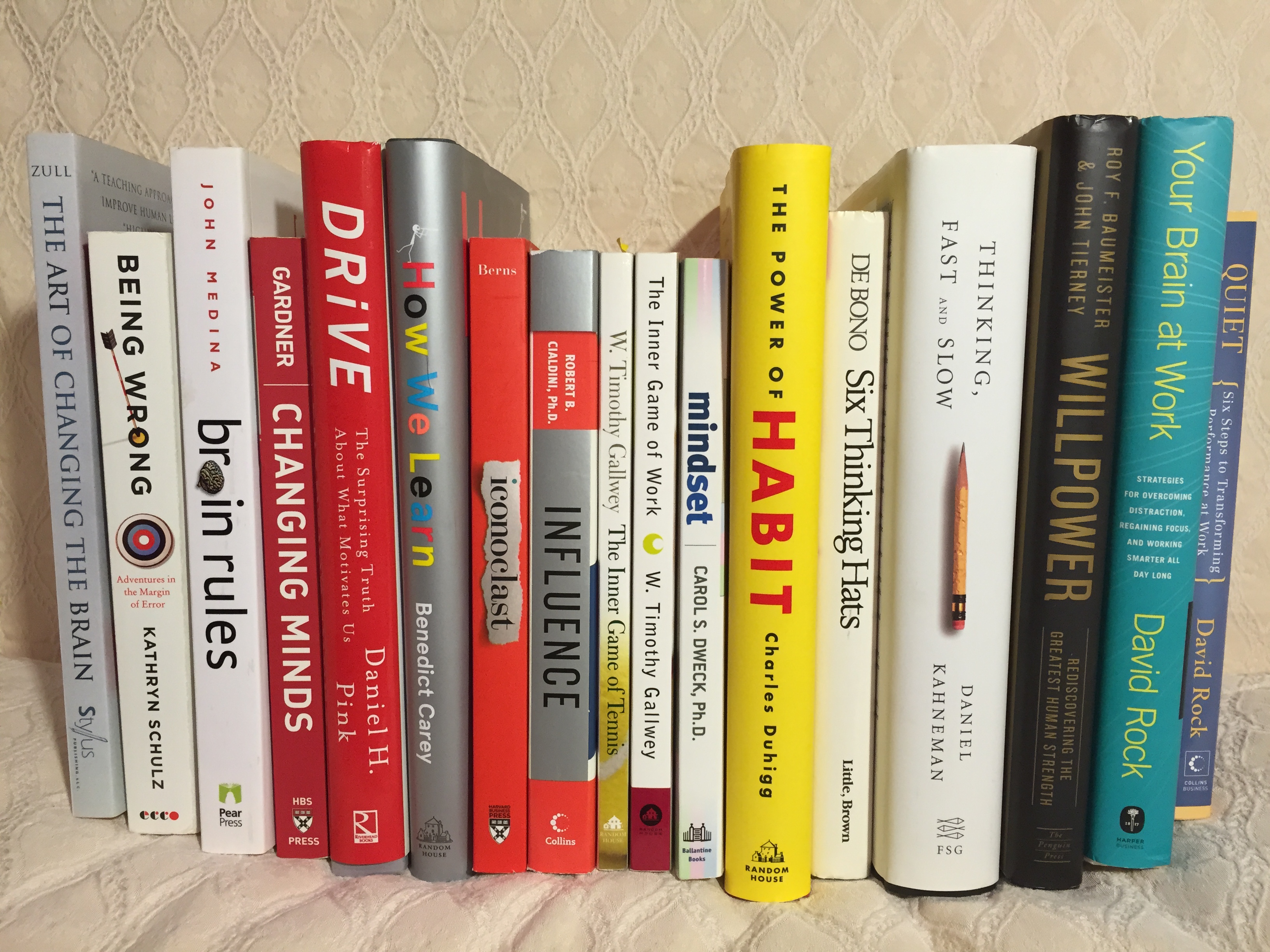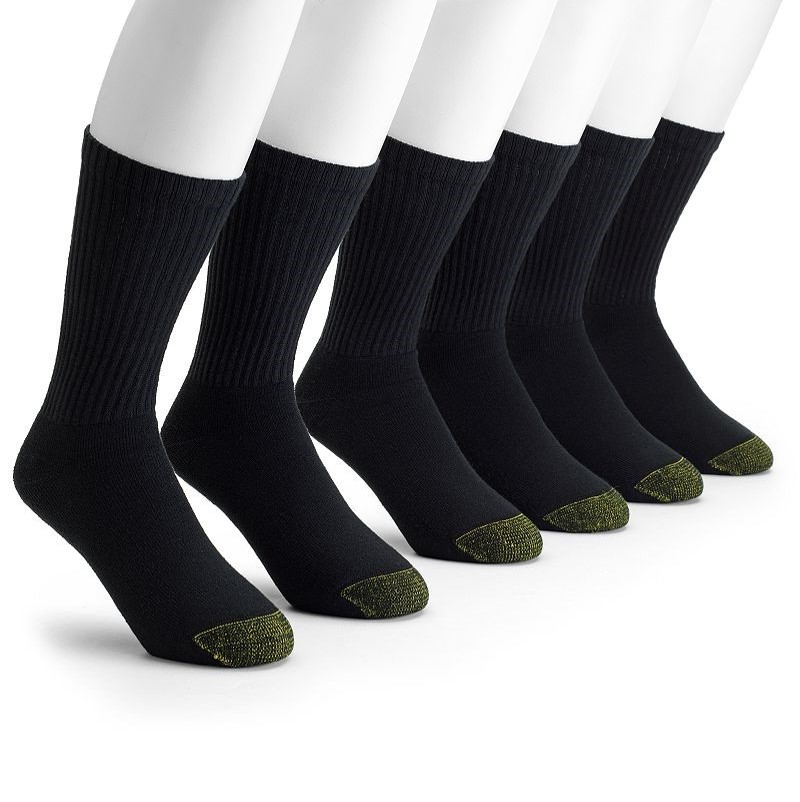 Todd Cherches | Comments Off |
Todd Cherches | Comments Off |  Careers,
Careers,  Interviewing,
Interviewing,  Thinking,
Thinking,  jobs,
jobs,  leadership,
leadership,  meetings
meetings  Friday, February 24, 2017 at 1:37AM
Friday, February 24, 2017 at 1:37AM 
So, you have an important job interview scheduled, or a big meeting coming up with the boss or with an important client. You’ve done your homework and you’re prepared, primed, and pumped up.
But have you thought about your thinking speed?
We all know that interviews and high-stakes meetings can be very stressful, and when nerves flare up our tendency is to think and talk too fast, leading to our potentially blowing that meeting that we prepared so long and so hard for.
In his best-selling, award-winning book “Thinking, Fast and Slow,” Daniel Kahneman takes a deep dive into how we think – and shows us how we can be more effective...simply by slowing down. According to Kahneman, one of the biggest problems is that we tend to -- especially when under stress -- think too fast.
When your brain reacts and responds automatically and instinctively – almost thinking without really thinking, that’s what he calls “thinking fast.” This is how we think most of the time. On the other hand, “thinking slow” is when your brain hits the pause button and takes a brief moment to consciously reason, consider, question, analyze, and decide -- before responding or acting.
Of course “thinking fast” is a good thing. We couldn’t possibly – and wouldn’t want to – have to over-analyze every single thought before responding. But, on the flipside, how often do we make mistakes because we jump to conclusions or have impulsive, knee-jerk reactions when we might have benefited from pausing, even momentarily, to devise a more well-considered response?
So how can you leverage the power of “thinking slow” when on the spot in your next meeting or job interview?
One simple and powerful way to do so is by keeping in mind this extremely effective storytelling technique called “PARLA.”
PARLA stands for Problem, Action, Result, Learning, & Application.
Let's say the interviewer asks you a question like, "Can you tell me about a time wherein you faced a similar situation?" or you're in a sales meeting and the potential client asks, "Have you ever worked with a company like ours before?" In either scenario, you might use the PARLA method to structure your 5-part response as follows:
P – Problem: Let me tell you about the time I faced a similar situation...;
A – Action: Here’s the action I took...;
R – Result: Here’s the outcome of that action...;
L – Learning: Here’s what I learned...;
A – Application: And (*this is the most important and relevant part to the listener) here’s how I would apply what I learned from that prior experience in the future....
Very often when an interviewer or a potential client asks us a question, what often happens -- in our excitement and enthusiasm to convince them to choose us -- we excitedly blurt out something like, “Because I have a degree in x, and ten years’ experience, and I’m a hard worker, and a team player, and blah blah blah.” Not only are we thinking fast, we’re talking fast, and often just rambling on and on. And that’s exactly what so many people do.
Instead, why not try to differentiate yourself by taking a breath and a brief, two-second pause...followed by a confident, PARLA-based story that will make you stand out from the crowd.
One time a new potential client asked me "How much experience do you have working with millennials?"
My PARLA-structured response: “I've definitely spent a lot of time working with millennials! In fact, I teach a graduate course in 'Leadership & Team Building' in the HR Master's program at NYU -- and most of my students are millennials. And I've worked with a number of tech start-ups who have mainly millennial populations ("Problem"). One of the things I always make sure of when training millennials is to keep things as fast-paced, varied, and highly-interactive as possible ("Action"). I've found that when I do, it dramatically increases their attention, comprehension, and retention ("Result"). So every one of my training programs is designed and delivered with my company's "3 E's" -- Educate, Engage, and Excite -- in mind ("Learning"). And, so, I would definitely make sure that any leadership program we do for your millennial employees is highly interactive and experiential as well ("Application").
It's that simple: PARLA.
By the way, the "P" for "Problem" just refers to the comparable challenge, issue, or situation you're using as an example.
And note that even if things didn’t go well in the Results phase of your example, what’s important is that you took an Action to address a Problem, and that you Learned something valuable from it that you can Apply going forward. And, in truth, that’s really what the interviewer is, ultimately, looking for: whether or not you have the relevant experience and the capability to do the job.
Lastly, PARLA is not just a storytelling technique for use when BEING interviewed or trying to persuade someone; it is actually a classic behavioral interviewing technique that an interviewer may use to question you! If an interviewer ever starts a sentence with, “Tell me about a time when…” you will now immediately recognize that that is what they’re doing…and what they are looking for in terms of a response. So (not to give away any behind-the-scenes interviewing secrets :), but now that you are aware of this very popular interviewing methodology, going forward you will be better equipped, and can be better prepared, to respond on the spot.
Seizing the opportunity to tell a powerful, well-structured personal story using the PARLA format will capture and hold the interviewer’s attention, bring your experience to life, shows that you can think on your feet, and demonstrates with poise and confidence that you have what it takes to do the job...because you’ve been there before.
That’s the power of “thinking slow” in action.
For additional resources to help you improve your thinking skills, please check out my blog post entitled, “15 Fascinating Books to Help You Become a Better Thinker.”

 Todd Cherches | Comments Off |
Todd Cherches | Comments Off |  Careers,
Careers,  Interviewing,
Interviewing,  Thinking,
Thinking,  jobs,
jobs,  leadership,
leadership,  meetings
meetings  Sunday, September 4, 2016 at 5:31PM
Sunday, September 4, 2016 at 5:31PM 
There was a time, a while back, when I was traveling for business almost every single week. That meant packing for three or four days on the road at a time, having to figure out which suits and shirts and ties I was going to wear. And then having to choose the perfect pair of socks to match each outfit.
This may seem trivial, but I had about 30 different colors and varieties of dress socks in my drawer to choose from, each with different designs, patterns, stripes, and shapes. So every time I got to this dreaded stage of the packing process, I would get more and more bothered by what an annoying, useless, and royal time-waster this was.
Until one day, as I sat there staring deep down into the abyss of my sock drawer, I came to the realization that something had to change. So I made the potentially life-altering decision that I would switch to wearing nothing but solid black socks from then on. And, so, the very next day, I went down to Macy’s in Herald Square and bought 18 pairs of the exact same plain, black dress socks.
Guess how many of my clients ended up noticing? None. And yet, how much time, energy, and stress did I immediately eliminate by making this one simple change? Tons!
By now, you’ve probably figured out that this post – and the Black Sock Decision-Making principle – isn’t really about hosiery at all. It’s about stepping back and finding ways to simplify the complexity in our everyday lives, and exploring the possible ways to reduce – by even one – the dizzying number of decisions we need to make on a daily basis.
Think about it: How many decisions did you have to make today…before you even left for work this morning?
What time to wake up?
SIMPLIFYING COMPLEXITY
Now imagine how much easier and less stressful your morning would be if you could eliminate just one single decision (or more!) from this list, simply by reconsidering your options and then streamlining your decision-making process.
In one of my favorite TED Talks (and books), “The Paradox of Choice,” psychologist Barry Schwartz explains “why more is less,” and how having TOO MANY options is actually too much of a good thing.
And in the beautiful and amazing book, Presentation Zen, the brilliant Garr Reynolds encourages us to seek out ways to turn complexity into simplicity – in our communications and in our lives – by looking for ways to strip things down to the “essential.”
Yes, the ability, and the willingness, to see things with new eyes and to differentiate the “essential” from the “non-essential” requires both mindfulness and time. But it will end up saving time in the long run, helping us to focus, be more purposeful, make better decisions, become less stressed, and ultimately, change our lives for the better.
So keep in mind these three classic quotations:
And remember that the more decisions in our lives that can be standardized, systematized, automated, and/or eliminated, to the point where we don’t even need to think about them anymore, the more we can free our time – and our minds – to focus on the things at work, and in life, that truly matter.
That, in a nutshell, is what the principle of “Black Sock Decision-Making” is all about:
Simplifying your life...one day – and one sock – at a time.
 Todd Cherches | Comments Off |
Todd Cherches | Comments Off |  Decision Making,
Decision Making,  Simplify comlexity,
Simplify comlexity,  Thinking,
Thinking,  leadership
leadership  Sunday, August 2, 2015 at 4:29PM
Sunday, August 2, 2015 at 4:29PM
 Todd Cherches | Comments Off |
Todd Cherches | Comments Off |  Thinking,
Thinking,  accumulation,
accumulation,  application,
application,  knowledge,
knowledge,  value in
value in  Innovation,
Innovation,  Thinking
Thinking  Wednesday, February 11, 2015 at 5:47PM
Wednesday, February 11, 2015 at 5:47PM Among the fastest-growing topics on business bookshelves these days are those that examine how we think, how we make decisions, why we make mistakes, how we learn, and how we lead.
These titles, which may be listed under the headings of social or behavioral psychology, behavioral economics, learning theory, or the increasingly popular title of “neuroleadership,” show us not only how we think, but also how we can start to think better.
Think about how many decisions you’ve already made today: What time to get up. Which toothpaste to use. What to wear. What to have for breakfast. How best to get to work. And what to do when you get there. From the minute we wake up, throughout the day, and until the second we fall asleep we are always thinking, whether we realize it or not.
But despite all that thinking, how often do we actually STOP to think about thinking? That’s what this year’s list is intended to help you do. Once you start thinking about HOW you think, it becomes pretty hard to stop. And with this heightened self-awareness, you will soon find yourself having greater insights, making better decisions, making fewer regrettable mistakes, and acting more efficiently, effectively, and confidently.
So here (in alphabetical order) are fifteen thought-provoking titles that will help you to become a more powerful thinker. They’re some of the best on the topic I read (or reread) over the past year—a mix of all-time classics and recent discoveries:
15 Books to Help You Think About Thinking
Art of Changing the Brain, The: Enriching the Practice of Teaching By Exploring the Biology of Learning
James E. Zull
Ever been interested in the biology, chemistry, and neuroscience behind how we think, learn, teach, and communicate? This highly accessible book gets into the details of how the brain actually works, and how learning actually happens, without ever getting too technical..
Being Wrong: Adventures in the Margin of Error
Kathryn Schulz
A fascinating journey through the world of error-making and a fun, eye-opening exploration of topics, from how and why we make mistakes to how and why we believe what we believe. For instance: “What was something that you used to believe, but no longer do?” Or (even more challenging) “What is something you believe today that you think you might not believe to be true in the future?” This book explores why are we so often wrong, and what can we do to change that.
Brain Rules: 12 Principles for Surviving and Thriving at Work, Home, and School
John Medina
Medina, a molecular biologist, provides an easily readable and highly practical guidebook that simplifies a highly complex topic without dumbing it down. With straightforward language and humor, he effectively clarifies and illustrates the importance of the mind-body connection when it comes to thinking and learning. For a sneak peak at how his 12 Brain Rules can help you to better rule your life, check out his collection of short, fun videos.
Changing Minds: The Art and Science of Changing Our Own and Other People’s Minds
Howard Gardner
From the master of “multiple intelligences,” this brilliant developmental psychologist takes a cognitive approach to influencing by exploring what it takes to change someone else’s mind, as well as our own. The act of influencing is both an art and a science that benefits from a greater understanding of how the human mind works. For example, one of his key points is that you should spend less time and effort trying to persuade someone, and more time trying to understand their resistance to your idea. So simple, yet so practical and powerful.
Drive: The Surprising Truth About What Motivates Us
(also To Sell Is Human: The Surprising Truth About Moving Others)
Daniel H. Pink
What makes people tick? In his two recent bestsellers, Dan Pink takes a deep dive into the psychology of how to motivate and influence people–an incredibly valuable skill for managers, leaders, and salespeople. Pink shows how and why we ALL need to be motivators and that no matter what we do for a living, we are ALL salespeople.
My favorite takeaway: People are motivated by AMP: Autonomy, Master, and Purpose. Let your people do things their own way, in an environment that allows them to develop, while doing work that truly matters, and you will be setting them up for success. You might also want to check out Pink’s popular RSAnimate video, as well as his fun new TV series, Crowd Control, to see his ideas in action.
How We Learn: The Surprising Truth About When, Where, and Why It Happens
Benedict Carey
This brand-new release leverages the latest research on how our brains absorb and retain information. The numerous practical insights and powerful examples make this quick and easy read a valuable resource for anyone in the learning and development, coaching, or education fields.
Iconoclast: A Neuroscientist Reveals How to Think Differently
Gregory Berns
An iconoclast is “a person who does something that others say can’t be done.” By focusing on three key areas—perception, fear response, and social intelligence—and studying the likes of Steve Jobs and Walt Disney, the author provides new insights into how we might model their behaviors to take a more brain-based approach to achieving success.
Influence: The Psychology of Persuasion
Robert B. Cialdini, Ph.D.
Influence, first published in 2006, is one of the most important books ever written on the subject. Taking a science- and research-based approach to figuring out why people agree to things and how to change opinion and behavior, Cialdini introduces us to his six now-classic persuasion strategies: Reciprocation, Commitment/Consistency, Social Proof, Liking, Authority, and Scarcity. Using these six principles can help bring success in work and in life.
The Inner Game of Tennis: The Classic Guide to the Mental Side of Peak Performance
(also The Inner Game of Work)
Timothy Gallwey
This book has very little to do with tennis, and everything to do with how we think. When playing tennis (or anything else, including the game of life), we are facing two opponents: the other person or team, and ourselves. And in most cases, we are our greatest enemy. It’s within our own minds where “the inner game” is played, and either won or lost. If you want to gain a greater understanding of the mental side of achieving peak performance, these two books (which I refer back to all the time) will help you get there.
Mindset: The New Psychology of Success
Carol S. Dweck, PhD.
Do you have a “fixed mindset” or a “growth mindset”? After hearing Dweck’s name referred to repeatedly over the past couple of years, I realized I better read this book to find out what she had to say—and what these two mindsets were all about. In brief, people who have a fixed mindset believe that you either have a talent or you don’t, that you were born that way, and that there is nothing you can do about it. Growth mindset people believe the opposite: that talents can be developed, and that obstacles can be overcome. Understanding this simple model helps us to gain a better understanding of ourselves and others, and shows how transitioning to a more growth-oriented mindset and developing a more positive and productive attitude can lead to higher levels of success.
The Power of Habit: Why We Do What We Do in Life and in Business
Charles Duhigg
Whether you’re trying to break an old habit or start a new one, this book will help you transform yourself into the person you would like to be through gaining a better understanding of how habits work, and what it takes to change them. Simply understanding and remembering his multipurpose, three-step “Cue-Routine-Reward” model will make you more self-aware and help you to develop new, more productive habits by filling the void left by the old, less-productive (or damaging) ones. More easily said than done, of course, but it does come down to mind over matter, and this book will help you get there.
Six Thinking Hats
Dr. Edward De Bono
One of my all-time favorite books and methodologies, by the guru of thinking about thinking, Six Thinking Hats, described in detail in one of my previous posts, will forever change the way you think, communicate, brainstorm, collaborate, and innovate.
Thinking, Fast and Slow
Daniel Kahneman
The numerous insightful stories and powerful examples will make you hyperaware of how much faulty thinking there is going on in the world around us, from cognitive biases and jumping to conclusions, to far too little objective, inquisitive, introspective thought, questioning, and decision making. This long but incredibly worthwhile work from 2011 is a modern classic.
Willpower: Rediscovering the Greatest Human Strength
Roy F. Baumeister and John Tierney
It takes willpower to read all (or even one!) of the books on this list, rather than just plopping down on the couch to watch a reality TV marathon on Bravo while finishing off an entire box of Mallomars. But if it were easy, we wouldn’t need a book devoted solely to the subject of willpower. Taking a deep dive into the subject of self-control, the authors explore the mind-body connection to help us take greater control over our own lives.
Your Brain at Work: Strategies for Overcoming Distraction, Regaining Focus, and Working Smarter All Day Long (also Quiet Leadership)
David Rock
Gaining a better understanding of how our brains function can help all of us be more effective by helping us take control of our thoughts and behavior. And if you don’t know (or care about) the difference between a prefrontal cortex and an amygdala, you will by the end of this fascinating work. With a better understanding of how the brain works, Rock shows us how you can use these insights to perform better AT work. His SCARF model alone is worth the price of admission. In Quiet Leadership Rock further applies his brain science insights to the world of work.
Where to start? You can’t go wrong with any of them. So just follow your brain…and your gut…pick any one...and dive right in.
 Todd Cherches | Comments Off |
Todd Cherches | Comments Off |  Wednesday, January 18, 2012 at 12:12PM
Wednesday, January 18, 2012 at 12:12PM 
When Todd Cherches seeks creative inspiration, wants to mull over an idea, or just needs a break, he does what any self-respecting management consultant would do: He takes a shower.
Mr. Cherches, who runs a 2-year-old management consulting firm called BigBlueGumball with his brother Steve, specializes in such areas as leadership development and management training. One of his primary areas of focus is helping clients learn how to be more innovative. Often, Mr. Cherches has learned, people get their best ideas when they're relaxed and engaged in another activity, like taking a walk around the block or exercising on a treadmill. “At those times,” he said, “very often ideas will just pop into your head.”
To read full article, please click: here
 Todd Cherches | Comments Off |
Todd Cherches | Comments Off |  Crain's,
Crain's,  Innovation,
Innovation,  Inspiration,
Inspiration,  Showering,
Showering,  Thinking,
Thinking,  brainstorming
brainstorming